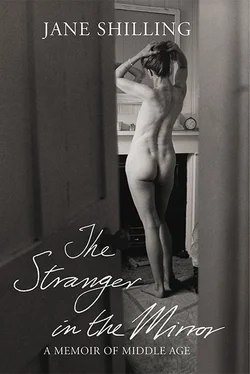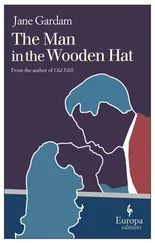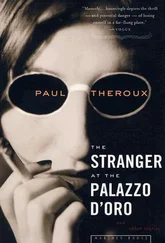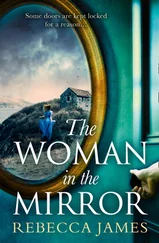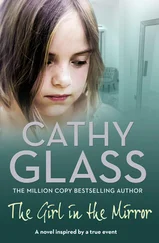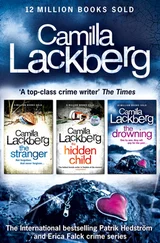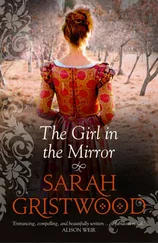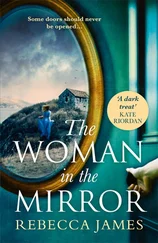At the end of ‘The Djinn in the Nightingale’s Eye’, Gillian Perholt is invited to another narratologists’ conference. She chooses to speak on Wish-fulfilment and Narrative Fate, pointing out the unreliable properties of wishes in fairy tales, with which the characters granted them try to deflect their fates, only to discover that the intervention of magic merely hastens or complicates their existing destiny.
Modest wishes, Dr Perholt observes, tend to prove more successful than grandiose ones. The simple desire of the innocent fool or the downtrodden heroine without ambitions beyond food on the table and someone to keep them warm at night has a better chance of being granted without some spiteful extra twist than the peremptory demands of those who wish to alter time, or the laws of nature.
Of these, examples can be found strewn all over the history of narrative: King Midas, whose greed turned all he touched – food, drink, his own warm, breathing little daughter – into cold gold; withered Tithonus, the mortal lover of a goddess, Eos, who secured immortality for him, but forgot to ask at the same time for immortal youth; Dorian Gray, whose history was scrawled across his ravaged portrait while his enchanted person retained the freshness of innocence.
Not that such hopeful monsters are confined to the realm of storybooks: ‘“We can make humans into works of some kind of art or artifice,”’ Dr Perholt reminds her audience. ‘“The grim and gallant fixed stares of Joan Collins and Barbara Cartland are icons of our wish for this kind of eternity.”’
This is easy for her to say, having been magically spared the choice between the grim and gallant fixed stare and the unmitigatedly haggish alternative of unimproved old womanhood. Her distaste for the pitifully enamelled old women seems based on a conflation of good taste with virtue (a fairly common delusion among the aesthetically sensitive).
Those tightly stretched old ladies with their wigs, their lacquered maquillages, tarantula eyelashes and immobile features, their unnaturally wide-awake regard and wardrobes selected from the sprightly girlhood of a far-distant era are monuments to what happens when you engage in the wrong sort of wishing. Which leaves unresolved the question of what, in the realm of real life rather than stories, might be the right kind of wishing about your appearance once you arrive at middle age.
It was in the Perholtish hope of a return to the (after all quite recent) time when my face and I had been on good terms that I went trotting briskly (very briskly, since I’d got tangled up in the maze of red-brick mansion blocks behind Wigmore Street and was thoroughly late for my appointment) down the London pavements that early summer morning. I had no idea what Dr Foster was planning to do to me, but I was convinced that it would be something marvellous – magical, even.
A reputation for being the best dermatologist in New York – a city where (I had read) the young women were so highly groomed that they had the insides of their nostrils regularly waxed – could hardly be based on the perfunctory smearing on and off again of ineffectual scented unguents. I had always wondered what it would be like to be well groomed and now I was about to find out.
I crossed and recrossed Wigmore Street, getting hot and flustered, while the tarnished silver lamé vest top, which I had worn with jeans as a stab at negligent New York chic, began to emit a steely smell of overheated metal. At last I turned a corner and there was the salon, its windows filled, like a glamorous funeral home’s, with arrangements of white lilies, its reception desk thronged with a flock of pretty little girls, like severe black-and-white-clad fairies, none of whom looked up as I approached, breathing hard and smelling of birdcages.
‘I’m here to see Dr Foster?’ said I, interrogatively. ‘Downstairs,’ said one of the fairies, still not looking up.
Downstairs were assembled a PR, the PR’s assistant, a discreetly made-up person in a white medical smock who looked like an actress playing the part of a nurse in a soap opera, a photographer and his assistant (for all this was being photographed for the article that I was to write about my experience), a collection of tripods, lights and silver foil reflectors and a barista brewing cappuccinos behind a little coffee counter. There was a distinct air of anticipation. I was afraid it was me they were all waiting for and gasped my apologies, but no, not a problem, soothed the PR. Dr Foster was not yet in the building.
As she spoke, her eye became fixed on a point behind my shoulder. Descending the glass staircase (down the side of which there streamed a miniature waterfall) was a fine pair of shiny black shoes, attached to legs encased in pinstriped navy suiting. A double-breasted torso followed, a flash of pale blue shirt and glossy silk tie, then a mane of swept-back silvery hair. In a shimmering nimbus of charisma, Dr Foster had arrived.
The tide of assistants surged briefly, then subsided, leaving the Doctor and me becalmed on a squashy leather sofa. He had very bright blue eyes, startlingly black-fringed, a gaze like a medical scanner (I could feel him assessing the imperfections of my face, even as he shook my hand) and a miasma of charm as powerful as a general anaesthetic. Generally rather resistant to charm, I could feel myself succumbing as he spoke: ten, nine, eight, seven… and I was under.
The Doctor, it turned out, shared my fondness for horses. He used to hunt in Virginia, until prevented by injury. He loved also his dear old grandmother, whose wrinkles, he confided, he was forever offering to smooth out. But Grandma wasn’t keen on this idea. ‘I haven’t got any wrinkles,’ she always used to say. ‘I go into the bathroom in the morning, I brush my teeth, I look in the mirror. I don’t see any wrinkles. After that I put on my spectacles and I don’t look in the mirror again for the rest of the day.’ I liked the sound of Grandma, and wanted to hear more, but Dr Foster had turned to the subject of his own looks. ‘See,’ he said, ‘I can raise my eyebrows.’ And he wiggled them, reassuringly.
I was not reassured. In fact I was extremely unnerved by the idea that I might be in need of reassurance. I was being told that I would not emerge from this salon looking like the Bride of Wildenstein, but it had never occurred to me that I might. I had taken ‘non-surgical rejuvenation’ to mean face packs containing essential oils and mineral-rich mud; massage, possibly some more outré forms of treatment with oxygen, crystals or coloured lights, to a soundtrack of whale music or Tibetan temple bells. In short, I had expected magic. In this I had made a category error. Non-surgical rejuvenation meant…
‘Just a little Botox here,’ said Dr Foster. ‘Some silicone in the cheekbones; perhaps some Restylane around the mouth…’ I felt as one does in nightmares in which one is frozen, sentient but paralysed as some horrible fate advances.
Long before my skin began to slacken and wrinkle, I might have considered myself a candidate for cosmetic improvement. I had friends whose parents had offered to pay for a rhinoplasty as an alternative to a coming-of-age party, and if I had had that sort of parents, with that sort of money, they would undoubtedly have made that kind of offer to me. Large, unlovely noses run on both sides of my family and a hawkish example had come down to me from my paternal grandmother.
Then I was born without a left pectoral muscle, which left me, after puberty, with a flattened concavity on the upper part of my left breast, where the right was nicely rounded. A shortened left shoulder-blade meant that I looked asymmetrical from the back as well as the front. This was a kind of deformity with which spinal curvature was sometimes associated. As a child, I had been regularly taken to see a consultant at St Bartholomew’s hospital in London; there was talk of physiotherapy, but never of surgery.
Читать дальше
